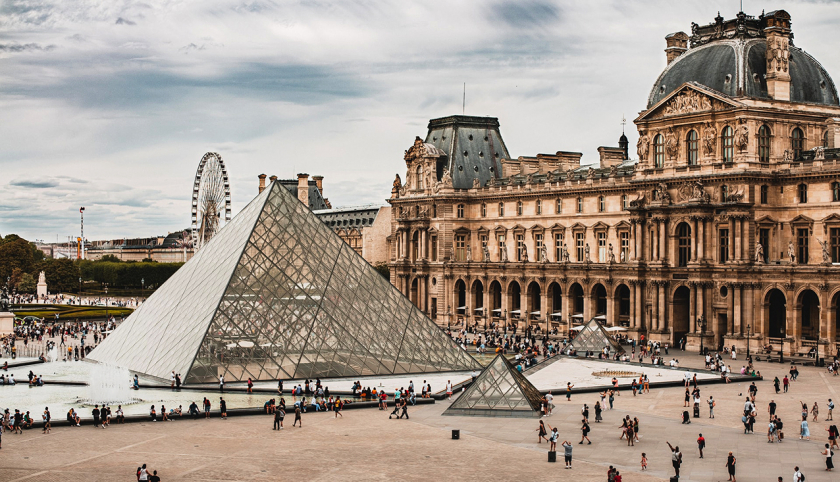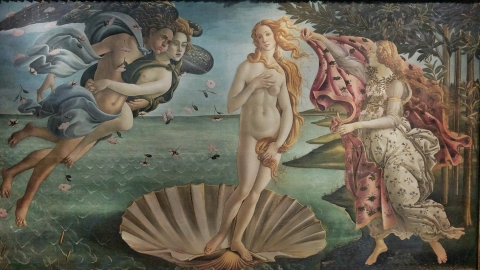Around 1190, King Phillip II of France decided to build the Louvre fortress, as a measure to protect the southern area of Paris from the risk of Viking pirate attacks. After a long period of time and many historical and social events, in the 16th century, this fortress was restored as a Royal Palace. By 1793, the Louvre officially became the most famous art museum in France, and in the whole world. However, by the mid-19th century, after completing the left and right areas, the overall architectural work ofLouvre MuseumIt was not until 1989, after many expansions and renovations, that the Museum officially opened to the public.

A view of the Louvre Museum and the glass pyramid - Photo: Mika Baumeister
The Louvre Museum has a total area of 210,000 m2, of which the area for displaying artworks is 60,600 m2. The unique feature of the Louvre's architecture is its three-wing structure: the Devon Wing (south), the Sully Wing (east) and the Richelieu Wing (north).
Currently, the Louvre Museum is displaying and introducing about 35,000 out of a total of 380,000 artifacts. The works are divided into 8 collections, corresponding to 8 display sections, with specific themes: ancient Orient, ancient Egypt, ancient Greece, Rome and Eltruria, Islamic art, painting, sculpture, graphic art and decorative art.
In addition, the Louvre also has a historical exhibition of the palace itself, along with a collection of Asian, African, American and Oceanian art.

Mona Lisa painting in the Louvre Museum - Photo: Federico Scarionati

The Three Graces statue in the Louvre Museum - Photo: Rika Digital
In just a short film of less than 5 minutes, you can admire some of the beauty of this century-old architectural work, and pretend you are directly enjoying a tour through time and space of art history.
Are you ready?































